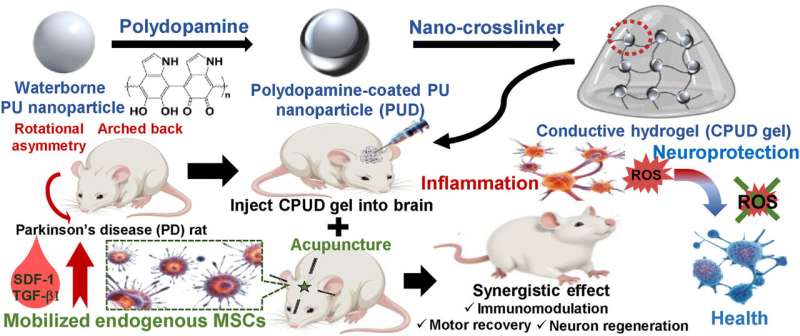Parkinson’s disease is a progressive brain disorder that causes tremors, slowed movement, and difficulty with coordination. Current drugs provide only temporary relief and do not stop the disease from getting worse.
A research team led by Prof. Shan-hui Hsu at National Taiwan University has created a new type of material—a fully biodegradable, electroconductive, and self-healing hydrogel—that could open a new direction for treating Parkinson’s disease. The study is published in Biomaterials.
The hydrogel is made by coating tiny polyurethane nanoparticles with polydopamine, a naturally occurring compound with antioxidant properties. When mixed with chitosan, these nanoparticles form a soft, injectable gel that closely mimics the properties of brain tissue. Importantly, the material can conduct electrical signals, repair itself after damage, and safely degrade in the body.

